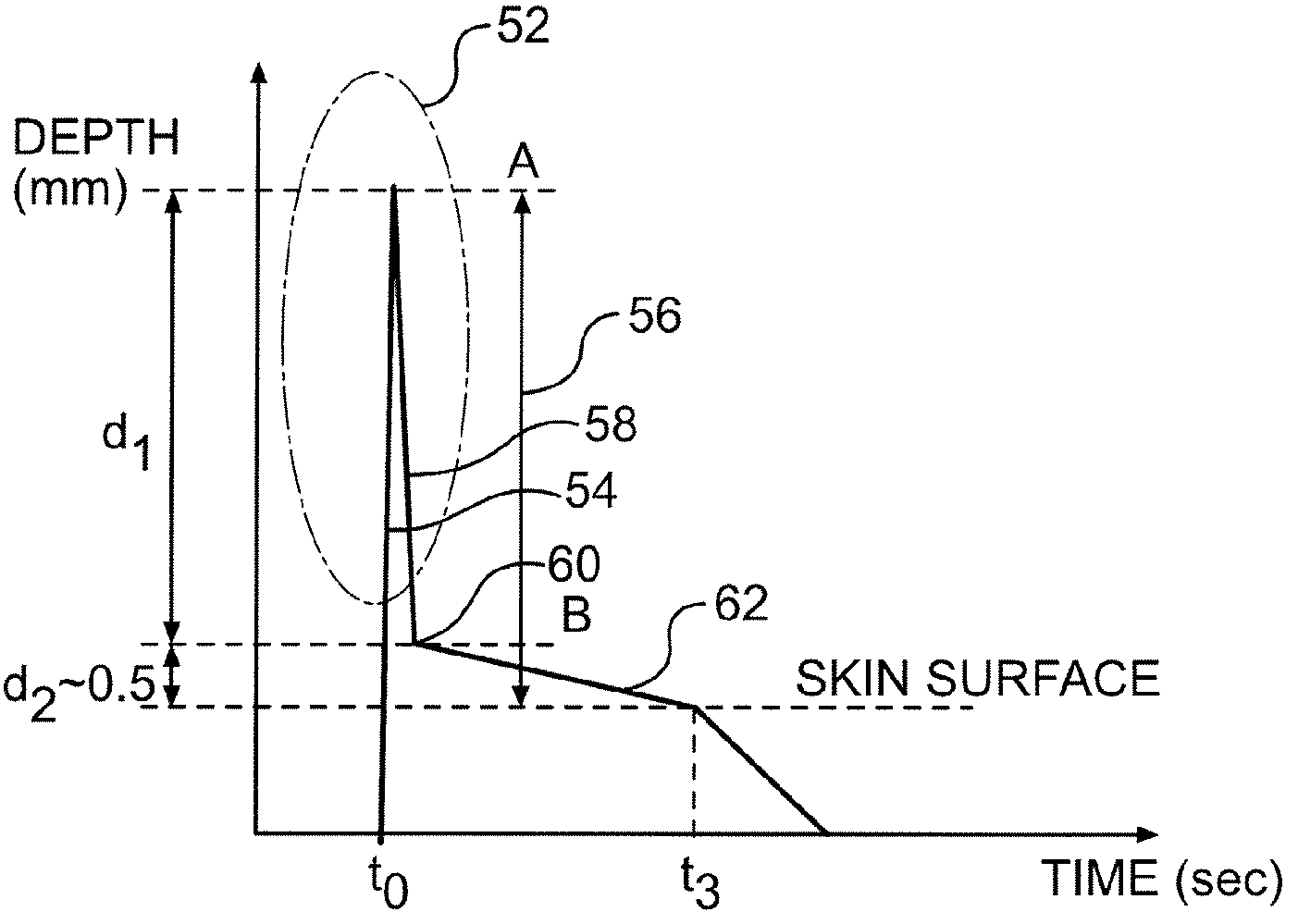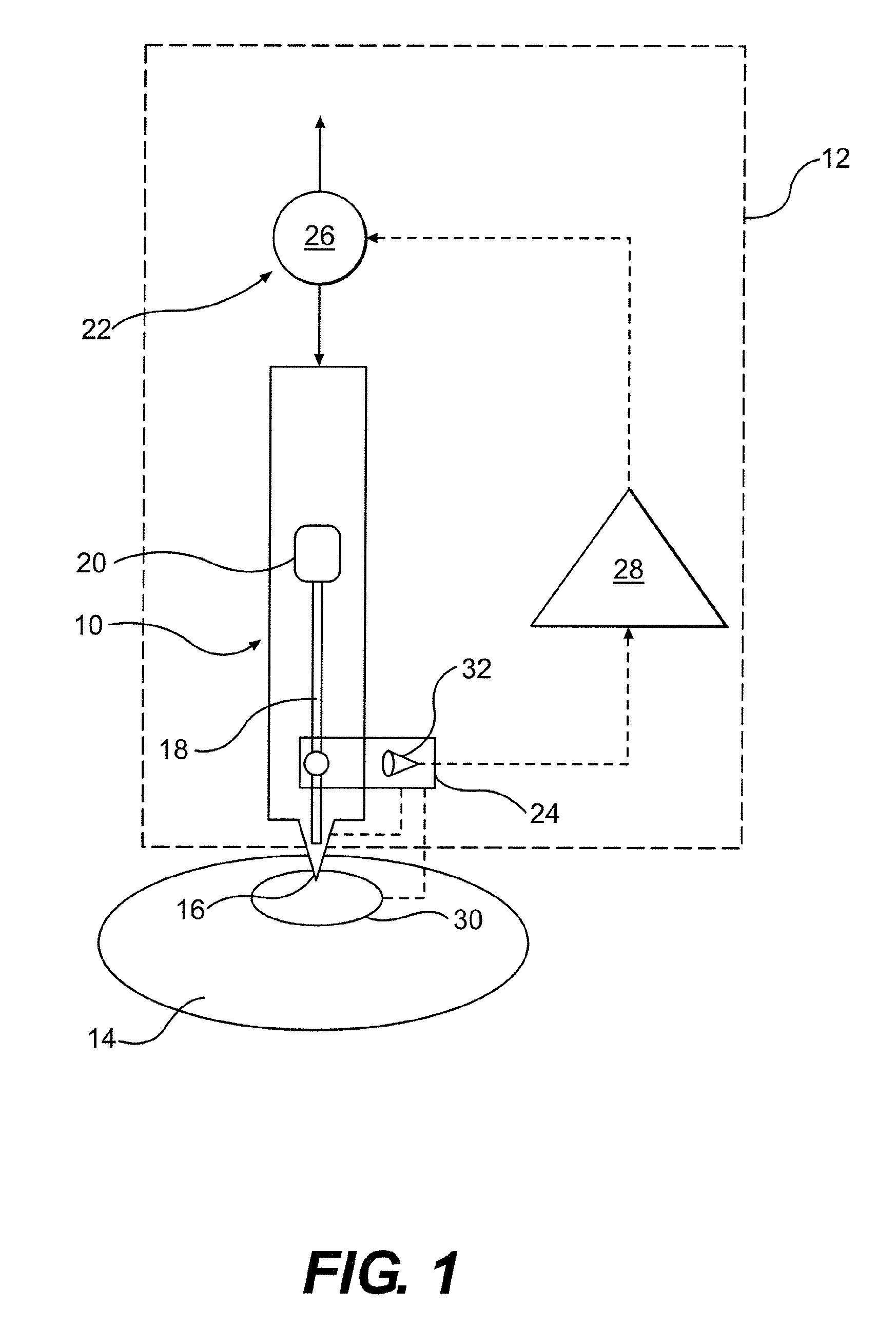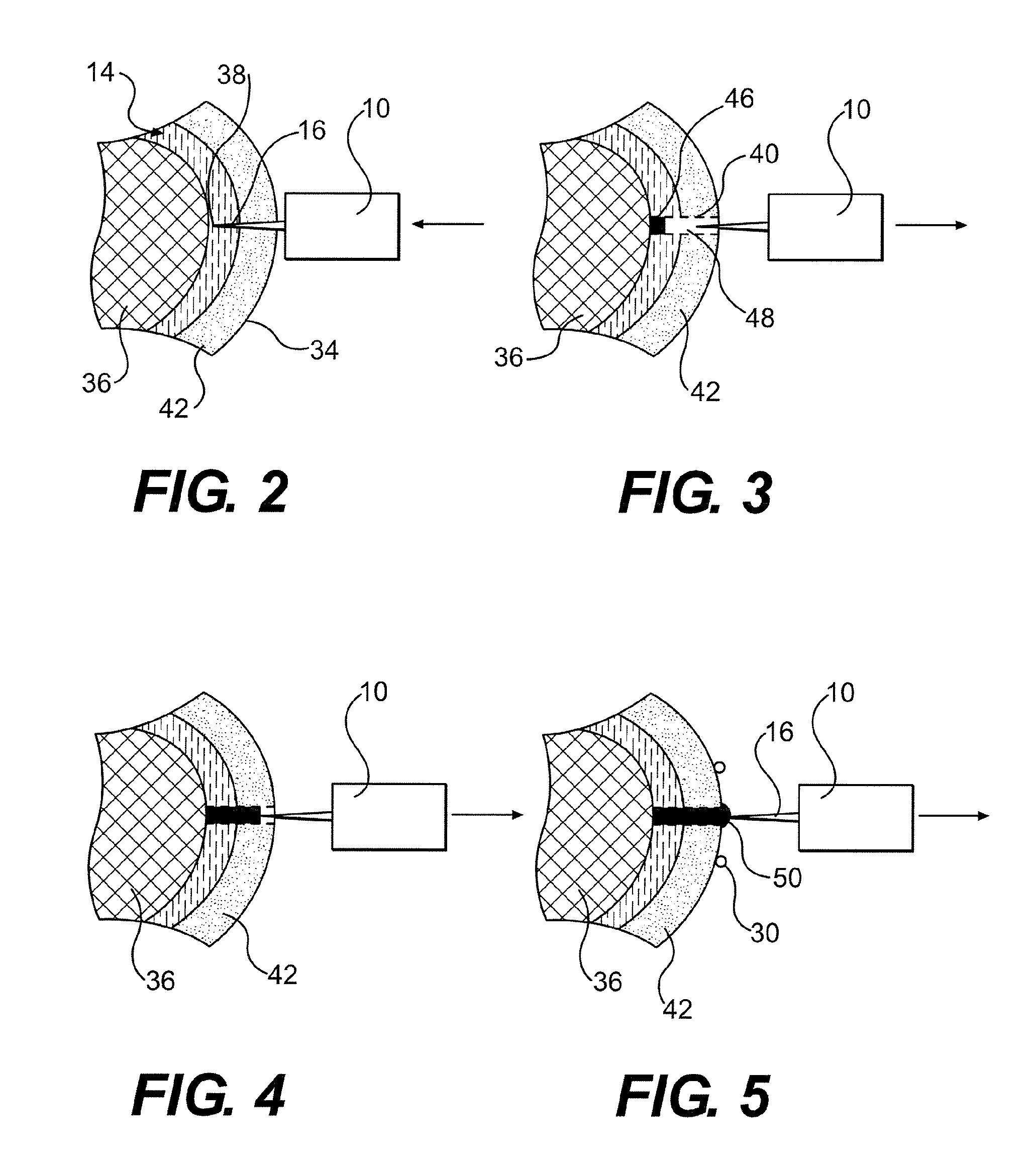Method and device for the extraction of a body fluid
a body fluid and method technology, applied in the field of body fluid extraction methods and devices, can solve the problems of inability to provide information about the actual success of blood collection, control has to be adapted to the desired lancing speed using a very complex apparatus, etc., and achieve the effect of optimizing the collection of body fluid
- Summary
- Abstract
- Description
- Claims
- Application Information
AI Technical Summary
Benefits of technology
Problems solved by technology
Method used
Image
Examples
Embodiment Construction
[0021]The embodiments of the present invention described below are not intended to be exhaustive or to limit the invention to the precise forms disclosed in the following detailed description. Rather, the embodiments are chosen and described so that others skilled in the art may appreciate and understand the principles and practices of the present invention.
[0022]The device shown in FIG. 1 is used for self-withdrawal of a blood sample by a user for analytical purposes. The device comprises a lancing element 10 as a disposable article for fluid collection and a hand-held device 12 for automatically handling the lancing element 10.
[0023]The lancing element 10 is designed as a so-called “microsampler” for collecting a small amount of fluid from a body part 14 such as, for example, a fingertip. The lancing element 10 is a flat-shaped member made of a thin, high-grade steel sheet and has a distal-shaped tip 16 as a lancing member which is connected via a semi-open, groove-shaped capillar...
PUM
 Login to View More
Login to View More Abstract
Description
Claims
Application Information
 Login to View More
Login to View More - R&D
- Intellectual Property
- Life Sciences
- Materials
- Tech Scout
- Unparalleled Data Quality
- Higher Quality Content
- 60% Fewer Hallucinations
Browse by: Latest US Patents, China's latest patents, Technical Efficacy Thesaurus, Application Domain, Technology Topic, Popular Technical Reports.
© 2025 PatSnap. All rights reserved.Legal|Privacy policy|Modern Slavery Act Transparency Statement|Sitemap|About US| Contact US: help@patsnap.com



